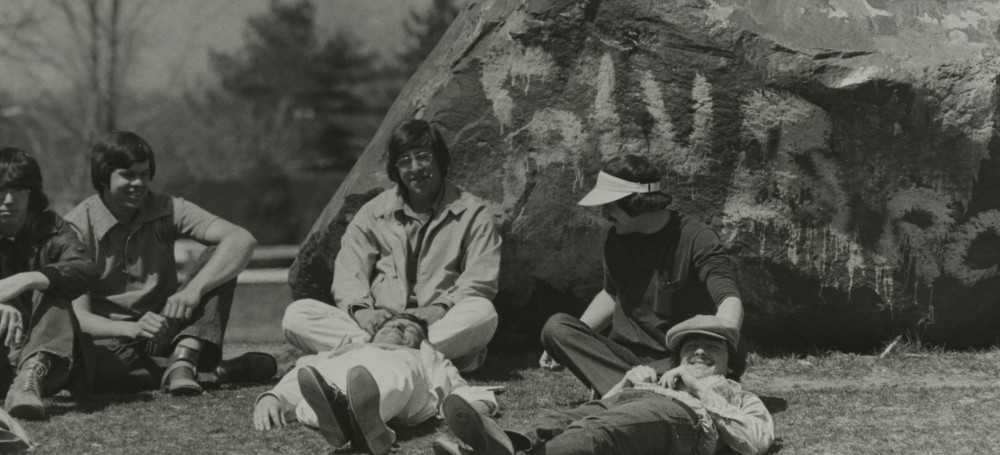Over the past few months, we’ve been exploring how the arrival of technology and the internet affected the campus community at Western New England University. We looked at early IBM machines, and the arrival of internet access, and today we’re going to look more closely at how both machines and internet changed the landscape of the library.
Just as it’s hard to imagine doing class work without a computer, it’s hard to imagine what D’Amour Library looked like without computers! So to get started, let’s take a look at D’Amour Library’s early days.
The Library opened in 1982 and operated for over ten years without computers for student use, or internet access. As pictured above, students worked with pen and paper on tables, and could find the books and articles they needed by looking through the card catalog.
By 1995, the campus was wired for the internet, and computers equipped with internet access could be found in Churchill. And D’Amour Library wasn’t far behind! In 1997, the library was already providing access to online resources, including WILDPAC (the library’s online catalog of books, which we still use today), Encyclopedia Brittanica online, and many periodical indexes. By 1998, the library had eight computer stations with internet access.
There were strict rules when using one of these eight computer stations, since, as one can imagine, they were in high demand. Library staff reported to The Westerner in February of 1998 that students would lose access to the internet if the following, among many others, maleficence occurred on a library computer workstation –
Sharing password or PIN with anyone.
Using the computer for other than legitimate academic and administrative purposes.
Using the library workstations to support inappropriate activities, even if the activities do no interfere indirectly with library services. Use of library workstations for monetary gain will be deemed inappropriate.
Any interference with D’Amour Library’s attempts to provide reliable computer services to its users.
Even checking email and word processing on these work stations were deemed to be non-academic purposes, and were not allowed. While many of these rules seem vague (what exactly constitutes a legitimate academic purpose, or interference with reliable computer services?), because internet access was so knew and unknown, they had to be. No one knew what the future held in regards to web based shenanigans!
A little more than five years after the arrival of the internet and computer workstations on campus, students were already quite dependent on these tools for their work. In an article in The Westerner, one student bemoaned the slow and unreliable network –
Students depend on it [the network] to research different assignments they have for class, as well as use it to communicate with others both inside and outside the college.
In the past months, the network has been down time and time again. Notably: It was down for a large portion of finals week last semester.
This isn’t a 9 to 5 atmosphere where we come in and go home at the end of the day, this is a 24/7 environment in which the ability to get onto the Internet is imperative to meeting our goals.
Things were changing fast! As a librarian wrote in The Westerner in 1997 –
We often tell bewildered patrons that we change everything here every 20 minutes. It’s almost true!
The arrival of the internet affected the library in ways that are still being felt, and explored, today. Certain aspects of library services made the transition from print to digital quite easily, such as the online catalog and print periodicals. But now the library has the unique challenge of helping students navigate the world of digital information, a world well beyond the library of books and magazines of the 1980s. But at least we have plenty of digital tools and resources – and more than eight computers! – to help.







